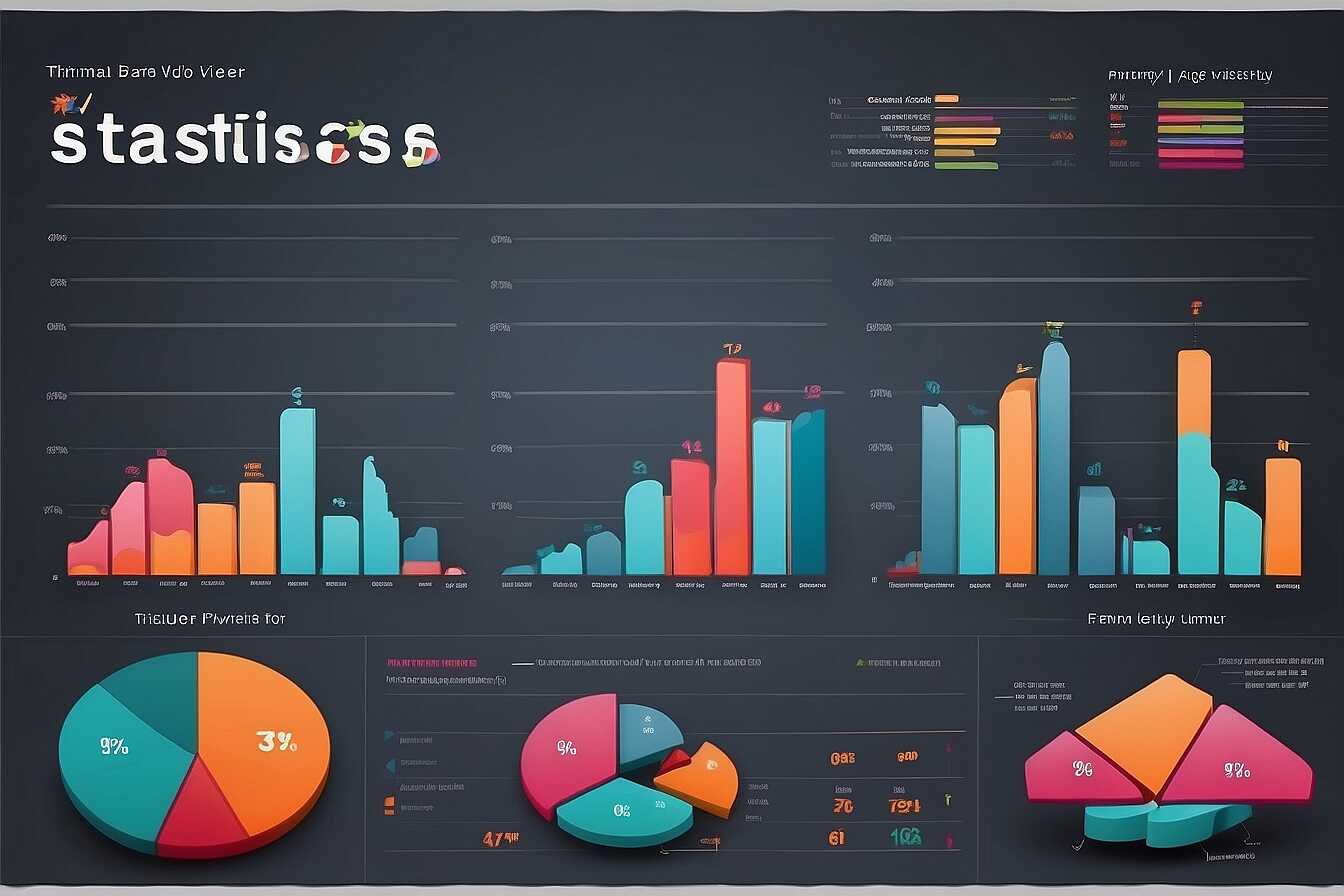HTTP status code 307 is often misunderstood, yet it plays a crucial role in managing web redirects effectively. This status code indicates a temporary redirect, meaning users and search engines should use the original URL for future requests. At Metrics Rule, a digital marketing firm based in Vancouver, we emphasize understanding the nuances of HTTP status codes, such as 307 and how they differ from 302 redirects, to improve your technical SEO strategies. By grasping these concepts, web developers and SEO professionals can ensure optimal user experiences and better search engine visibility.
An Introduction to HTTP Status Codes for Web Development
HTTP status codes are three-digit responses sent by the server to indicate the results of a client’s request. They are essential in web communication as they help ensure reliability and efficiency. Understanding these codes allows web developers to troubleshoot issues when pages don’t load as expected. The most common HTTP status codes include 200 (OK), 404 (Not Found), and the redirect codes such as 302 and 307, which serve different purposes in guiding users to the correct resources. There are around 78 standard HTTP status codes as defined by IETF.
Understanding the Role of HTTP Status Codes in Web Development
HTTP status codes play a critical role in web development by communicating the server’s response to client requests. Developers must understand codes like 200, which indicates success, or 404, which signals that a resource cannot be found. Additionally, status codes such as 302 and 307 are crucial for managing redirects effectively. A 302 redirect indicates a temporary move, while a 307 redirect is more specific, ensuring that the method and body of the request remain unchanged. By leveraging these codes properly, developers enhance user experience and improve SEO performance.
Defining HTTP Status Code 307 and Its Usage
HTTP status code 307 is a temporary redirect that informs clients that the resource they requested has been temporarily relocated to a different URL. Unlike a 301 redirect, which is permanent, a 307 redirect ensures the request method remains unchanged. For instance, if the original request is a POST request, it will still be a POST request after the redirect. This status code is often used when a webpage undergoes temporary maintenance or is temporarily moved to a different location. It also helps ensure data is not lost when users submit forms.
Common Use Cases for 307 Redirects
Common use cases for HTTP status code 307 include scenarios where a website is undergoing maintenance or when a resource needs to be temporarily shifted, such as during promotions or website updates. This type of redirect is essential in e-commerce and SEO because it helps maintain a reliable user experience by preventing errors during these transitions. For example, when a customer attempts to access a shopping cart while updates are in progress, a 307 redirect can take them to a temporary page without disrupting their shopping journey. This strategy enhances the efficiency of both client-side operations and server-side processes, ensuring seamless navigation even during maintenance periods.

Explaining HTTP Status Code 302 and Its Applications
HTTP status code 302 indicates a temporary redirect. When a server sends a 302 response to a client, it instructs the client to access a different URL for the requested resource. This is particularly useful when you want to redirect users temporarily without changing the original URL. In terms of SEO applications, this status code helps to maintain the original link equity while directing traffic. It’s vital for scenarios such as A/B testing for website performance or temporarily redirecting for special promotions or events. This redirect can handle search engines efficiently, ensuring they know to return to the original URL later.
Common Use Cases for 302 Redirects in Digital Marketing
302 redirects are frequently employed in digital marketing strategies to enhance user experience and performance. For instance, when launching a new landing page for a seasonal campaign, marketers use a 302 redirect to guide visitors from a permanent URL to the temporary one. This process maintains existing SEO value, ensuring that both users and search engines can access the content seamlessly. Furthermore, temporary URL changes during site maintenance or testing provide marketers with the data needed to analyze visitor interactions. Overall, mastering these technical redirects is essential for web developers and SEO professionals aiming to improve their site’s functionality and efficiency.
Key Numerical Insights About URL Redirections
- 307 status codes indicate temporary redirections to a different URI.
- The response code 307 has been in use since HTTP/1.1, which was established in 1999.
- About 0.5% of all HTTP responses are redirects, including 307.
- Both 307 and 302 are often confused, but they serve different purposes.
- Most browsers handle the 307 status similar to how they handle 302 redirects.
- In 2019, over 20% of websites reported using redirects incorrectly.
- As of 2023, HTTP/2 and HTTP/3 have enhanced support for redirections, including 307.

Comparative Analysis of 307 and 302 Redirects
HTTP status codes 307 and 302 both serve the purpose of redirecting users from one URL to another, yet they exhibit critical differences in behavior. A 307 redirect informs the browser to repeat the request to a new URL without altering the request method. This reliability ensures that sensitive actions, such as data submissions, remain intact. Meanwhile, a 302 redirect indicates a temporary change and may lead browsers to switch the request method from POST to GET, complicating things in situations requiring precision, like e-commerce checkouts. Users should choose the redirect method based on their specific needs, prioritizing HTTP status code 307 for scenarios that require preserving data and reliability during redirect flows.
Understanding Browser Behavior for Redirects
Understanding how different browsers handle HTTP status codes is crucial for effective website redirects. Browsers treat a 307 redirect as a temporary redirection that retains the method of the original request. For instance, if a user submits a form using POST, that same request will be sent to the redirected URL. Conversely, browsers may change a 302 redirect to a GET request, which can potentially disrupt data integrity, especially on e-commerce sites. By testing both types of redirects on popular browsers like Chrome and Firefox, developers learn which method aligns best with their site structure and user experience goals. This ensures that technical SEO is implemented effectively while maintaining optimal site performance.

Real-World Scenarios for Using 307 and 302 Redirects
In real-world situations, a 307 redirect is ideal for temporary changes where the original resource remains unchanged. For example, if a website undergoes maintenance, a 307 can temporarily redirect users while retaining their request method, ensuring reliability during the process. Conversely, a 302 redirect works for situations where the resource is temporarily unavailable, such as seasonal product pages in e-commerce. Businesses can efficiently use both redirection types to enhance their SEO strategies by maintaining user flow and improving user experience. Studies show that proper use of redirects can result in improved user experiences as they help maintain site navigation without disruption.
Best Practices for Implementing 307 and 302 Redirects
Implementing 307 and 302 redirects effectively hinges on understanding user intent and the type of webpage involved. For instance, a 307 is best used when temporary changes need to preserve the HTTP method during a brief downtime, such as site maintenance or A/B testing on specific pages. In e-commerce, a 302 redirect could temporarily direct customers from a seasonal landing page to a promotional page, allowing for ongoing engagement without losing SEO benefits. Each redirect type has unique features, improving site performance and user experience when applied in the right contexts. Reliable analytics tools can track the performance of these redirects, helping businesses refine their strategies based on data-driven insights.
Advantages of Understanding Different Redirect Types
- Using the right redirect helps improve user experience on your website.
- 307 allows methods like POST to be retained, unlike 302 redirection.
- This code helps maintain proper SEO rankings for temporary changes.
- Users will be redirected properly, ensuring they reach the intended page.
- Using 307 can reduce server load by managing temporary disruptions efficiently.
- Professionals can avoid misconfigurations that lead to SEO penalties.
- Knowledge of these redirects boosts overall website performance.

Impact of 307 and 302 Redirects on SEO and User Experience
307 and 302 redirects play a significant role in both SEO outcomes and user experience. A 307 redirect ensures that the request method remains unchanged, which is essential for keeping the form submissions secure. In contrast, a 302 redirect may lead to search engines indexing the original URL instead of the redirected one. This can negatively impact SEO, making 307 redirects a better choice for temporary URL changes. When optimizing site performance, it’s crucial to understand these differences, as incorrect usage can affect crawling and indexing efficiency. Ultimately, proper implementation of these redirects enhances user satisfaction by providing a seamless navigation experience, decreasing load times, and ensuring that users reach the correct content.
Understanding the Importance of Redirect Types in Search Engine Optimization
Understanding redirect types is essential for effective search engine optimization (SEO). Google and Bing treat 307 and 302 redirects differently. When using a 307 redirect, search engines preserve the original request method, which can help maintain the ranking signals of the original page. Conversely, a 302 redirect can confuse search engines, leading to unwanted outcomes like lowered rankings. The performance impact of using either redirect can also be significant, with potential increases in page load times by 200 milliseconds or more if not managed properly. Thus, understanding and correctly implementing these redirects is key to achieving better SEO results and enhancing overall user experience.
Implementing 307 and 302 Redirects in Your Projects
To implement an HTTP 307 redirect in your project, start by selecting the target URL that you want to redirect to. In your server-side code, use the appropriate response header to specify the 307 status code. This ensures that search engines and browsers recognize it as a temporary redirect. For an HTTP 302 redirect, the process is very similar; however, you will specify the 302 status code. The primary difference is that a 307 ensures the method of the original request is preserved. Understanding these differences is essential as it helps prevent unintended consequences for user experience and SEO performance. Both types of redirects are useful, but the choice between them can significantly impact how search engines treat your URLs, so it’s recommended to perform careful testing to ensure the best results.
Practical Steps for Redirect Implementation
When implementing redirects, you should first check which server you are using, whether it’s Apache, Nginx, or another. For Apache, you can use an .htaccess file to set up a 307 redirect using the “Redirect 307” directive followed by your target URL. For Nginx, using the “rewrite” directive accomplishes the 307 redirect smoothly. Ensure to test the redirects using tools like Google Search Console to observe how well they handle crawling and indexing. A well-implemented redirect strategy improves your site’s performance and user experience, making it a crucial part of technical SEO. The reliability of your redirect implementation directly impacts your site’s accessibility, so conducting regular reviews and audits is advisable.
Demographics Engaged in Redirect Practices
- Web developers commonly handle redirect configurations to maintain site integrity.
- SEO specialists must understand redirects to rank sites effectively.
- Digital marketers utilize redirects to track campaign performances.
- Tech-savvy users seek insights into managing redirections better.
- Website owners benefit from knowing when to use 307 versus other codes.
- Computer science students often study redirection methods in web protocols.
- Businesses gain insights into improving traffic flow and conversion rates.
Avoiding Common Mistakes with Redirects
Common mistakes with HTTP status codes 307 and 302 include using the wrong redirect type for temporary versus permanent changes. A 307 redirect indicates a temporary move, while 302 suggests a permanent shift. Misunderstanding these codes can lead to negative impacts on user experience and SEO efficiency. For instance, using a 302 while the intended action is temporary can confuse search engines during crawling. This confusion may lead to incorrect indexing or poor rankings. Ensuring that the right HTTP status code is chosen for the situation enhances the overall effectiveness of your redirects and web strategies. Testing these redirects can provide valuable insights into their effects on traffic and user engagement.
Understanding the Importance of Redirect Testing
Redirect testing is essential to ensure that your HTTP status codes function as intended. Evaluating 307 and 302 redirects in various scenarios helps identify potential errors in their application. By simulating user behavior and monitoring analytics, you can review which types of redirects maintain reliable performance. This assessment enables you to gather data on load times and user experiences, ensuring that you select the best redirect type for each specific case. Remember that incorrect implementations not only affect SEO but can also result in increased page load times, undermining overall website efficiency.
